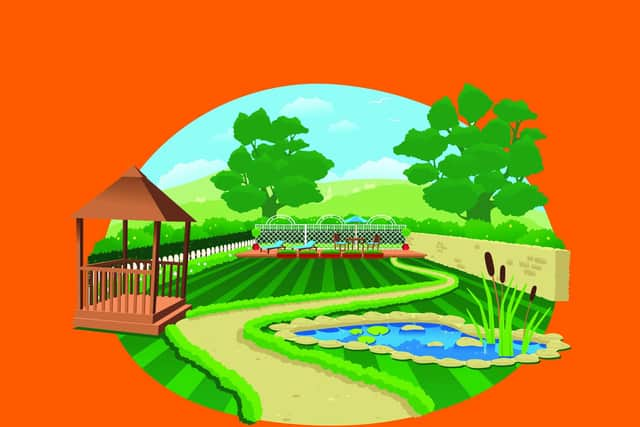Kirsty McLuckie: Digging up green issues
A study by Admiral Insurance this week found that in Scotland, a property with a garden will cost on average 7.2 per cent more than one without – with a much higher premium paid in cities.
Outside space is clearly highly prized, particularly for the summer, but with the first blast of autumn weather coming in, buyers should be aware that some gardens grow nothing but problems.
Advertisement
Hide AdAdvertisement
Hide AdAngela Slater, outdoor expert at Hayes Garden World, says there are six key things you should look out for when viewing a new house with outside space.


Firstly she points to boundaries. “Check the title plan thoroughly to ensure that no fences have been moved or boundaries altered, which could cause upset later.”
Some properties, particularly corner plots, can have as many as six other houses sharing fences, which means six neighbours to negotiate with if you want to change your fence. It is important to consider how overlooked your garden will be too.
Ponds can be another worry, as they can contain bacteria such as E.coli or legionella. Testing the water, fixing the problem or removing the pond can be costly. Those with small children may want to steer clear of them altogether.
Access to a garden can be tricky, particularly in mid-terrace houses. Slater says: “Limited access is a cause for concern if the garden needs a lot of work. Digging, for example, will have to be done by hand rather than by a machine. Even just putting the bins out can be tiresome.”
And while trees can provide welcome shade in summer, they also have problems and can become unstable. Tree removal can cost thousands of pounds.
Slater adds: “Neighbouring trees [can] block your light, and you can’t force a neighbour to remove a tree. Even trees on the road, maintained by the council, can overshadow your garden, so you'll need to decide if you can live with it, possibly for a long time.”
There are a number of plants that can cause harm, especially to young children. An overgrown garden will likely be home to thorns and nettles at the lower end of the risk scale.
Advertisement
Hide AdAdvertisement
Hide AdFar more hazardous is giant hogweed, which can cause burns if skin comes into contact with its sap. Foxgloves can be poisonous if ingested, as can wild parsnip plants.
Japanese Knotweed’s roots can cause building foundations to weaken and can lead to a mortgage being declined.
Perhaps – most importantly – being realistic about the size of garden you want will save problems in the future.
Slater says: “Many people compromise on the outdoor space when the rest of the home is exactly what they want, but a garden that is too small might not cope with a growing family.
“A big garden might seem ideal, but it depends on how much time you have to maintain it. It can also be very expensive to landscape a large garden that is in a state of disrepair.
“A messy garden with tons of space is a red flag for anyone who is time-poor or an inexperienced gardener, so choose wisely.”
- Kirsty McLuckie is property editor at The Scotsman